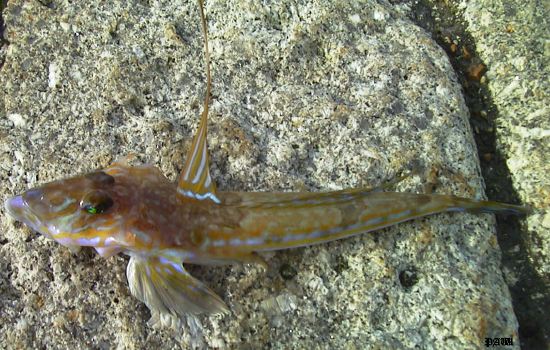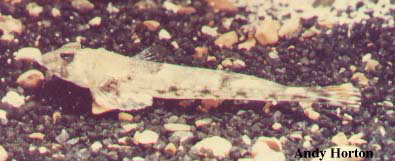Identification:
The body is long and thin, with a degree of vertical compression, that results
in a flattened belly, but with a rounded tail section.
The eyes are large and close set, and are situated on top of the large broad
head. The mouth is also large and is strongly extensible, with moderately
large lips, and is set very low. The cheek spine on the lower gill cover
has four strong hooks or spines. Three of which point upwards, with the fourth
and lowest pointing forwards.
There are two dorsal fins, the first of which in the mature males is composed
of four membrane bound spines. The first spine is greatly extended to give
rise to the narrow based scimitar looking sail fin. The females and immature
males have much shorter spines.
The second dorsal fin has nine long rays, with only the last being branched.
The anal fin is approximately the same length as the second dorsal fin, but
set further back, and is also composed of longish rays. The tail fin is long
and rounded, with both the pelvic and pectoral fins being large and rounded
in shape as well.
Colouration is also sexually dimorphic, with males being brightly coloured,
with yellow and blue longitudinal bands on the first and second dorsal fins,
and with blue stripes and mottling on the yellowish brown of the head, back,
and sides, towards the white of the belly.
The females are more drab, with a pale brown background and darker side blotches
and three saddle marks, running from the back.
Breeding:
Elaborate courtship display, with female swimming beside the posing
male. Male puffs out his mouth and gill covers, and with his fins erect.
In this way the pair rise from the seabed, and swim together to spawn. February
to April.
Habitat:
Associated with sandy or muddy bottoms to about 50m or so, although not unknown
to depths of 200m.
Food:
Feeds on small crustaceans, molluscs, and a variety of worms.
Range:
Found all around the coastline of the UK.
Additional Notes:
|

